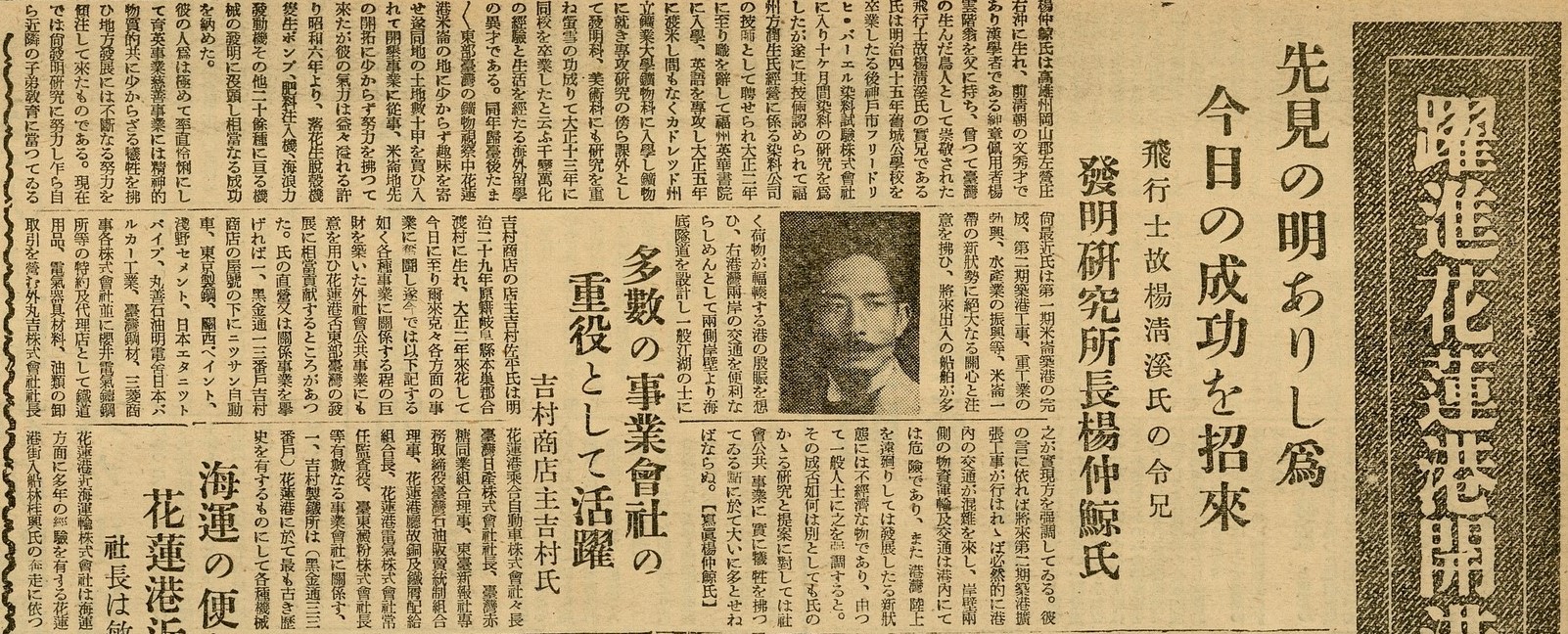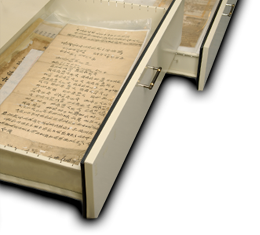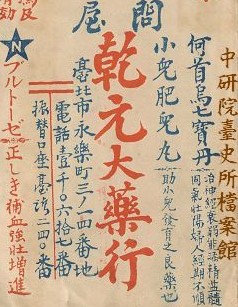1. Commemorative Special on Opening of Hualien Port
On October 1, 1939, on the occasion of the opening of Hualien Port, The Taiwan Shinminpo carried a commemorative news special titled:
Leaps & Bounds of Hualien Prefecture: A Full Report
Abundant Resources Unleashed during Port Construction
Production Volume Reaching 200 Million by 1945
There was full-page coverage on the current development of Hualien Prefecture, emphasizing its potential for further advances, which revealed great expectations and enthusiasm for the industrial development of Hualien.
The report pointed out that although industries and resources in western Taiwan have been well developed, Hualien Port still had lots of land to be reclaimed for development. With river maintenance, irrigation facilities and soil improvement, much land could be used for cultivation. Furthermore, availability of hydroelectric power, forest resources, limestone, quality copper ore and other important minerals, provided possibilities for boundless development of national industries.
In addition, following the opening of Hualien port, emerging industrial enterprises manufacturing aluminum, magnesium, nickel, ammonium phosphate, urea gypsum, sugarcane bagasse, and wood pulp pushed forward centralized and standardized generation of power for use by different industries. The East Taiwan Electric Power Co. (東臺灣電力株式會社), Ltd. had already begun the construction of related power generation facilities.
Not only did the opening of Hualien Port invigorate maritime traffic between Japan and Taiwan, it also facilitated import of mineral resources as raw materials from Southeast Asia for production into goods for exports. Attracted by the abundant and low-cost power resources in Hualien Prefecture, plants of heavy and light chemical industries relocated there, contributing to the rise of Hualien Prefecture into an industrial city.

Figure 17 Commemorative Special on Opening of Hualien Port published in The Taiwan Shinminpo on October 1, 1939
Source: The Taiwan Shinminpo No. 3115 (1939-10-01), Records of The Taiwan Shinminpo (T1119), 1939.
2. Yang Zhong-jing – an inventor
The news special on the opening of Hualien Port also features life stories and thoughts of public figures in Hualien. These reports are valuable sources of information for studying the local history of Hualien. The first public figure covered was an US-educated inventor, Yang Zhong-jing (楊仲鯨, 1898-1967). Born in Youchong, Kaohsiung Prefecture (the present-day Youchang, Kaohsiung City), Yang’s family was well-known in the local area and prospered in fish farming at Wandan Port (the present-day naval port) in Zuoying. His father was Yang Yun-jie, a scholar of the Qing Dynasty, and his younger brother was the famous aviator Yang Qing-xi.
Yang’s educational experience was diverse. After graduating from the local public school, he went to Friedrich Bayer & Co. in Kobe, Japan to research on manufacturing of dyestuffs. In 1914, he went to study English at the Anglo-Chinese College in Fuzhou, China. In March 1916, he applied for a passport and went to study mineralogy at the Colorado School of Mines in the United States and at the same time devoted himself to research in invention and fine arts.
Upon graduation and returning to Taiwan in 1924, Yang established an invention research institute. After inspecting the mining industry in eastern Taiwan, he decided to start his career in Hualien and engage in land reclamation in Milun. He also invented more than 20 machines, including devices for shelling peanuts and injecting fertilizer as well as wave-powered engines. Yang had a wide range of interests, including gardening, sports and music. In addition to inventions, Yang also made contributions to the local development of Hualien. Regarding construction of Hualien Port, Yang had the opinion that the second-phase expansion project would inevitably cause problems including traffic chaos and dangers to material transportation.
After World War II, Taiwan held its first county and mayor election in 1950. Representing the China Democratic Socialist Party, Yang was elected as the first magistrate of Hualien County and was the first democratically elected local leader.

Figure 18 Yang Zhong-jing featured in Commemorative Special on Opening of Hualien Port published on October 2, 1939
Source: The Taiwan Shinminpo No. 3116 (1939-10-02), Records of The Taiwan Shinminpo (T1119), 1939.

Figure 19 Application papers of Yang Zhong-jing submitted to the Government-General of Taiwan in 1916 for travel document to the United States, including an investigation report on his identity issued by the police station of his domicile.
Source: Volume III, 1917, Official Documents of the Taiwan Government-General (T0797), 1917.
4. Xu Man-hui – an industrialist
Xu Man-hui (許屘輝, 1901-?) is a famous gentry in Fenglin District, Hualien Prefecture. Originally born in Keelung District and graduated from the public school of Keelung, Xu had long been engaged in research and studies on Sinology. In 1919, he and his elder brother Xu Liu-zhi became involved in liquor sales and the shipping industry at Hualien Port. Businesses grew and expanded, with Xu becoming a well-known aspiring industrialist. Around 1922, Xu obtained the franchise and became the monopoly seller of liquor and opium in Fenglin District. At the same time, he participated in public affairs, serving on the Residents’ Association of Fenglin and as a deputy leader of Fenglin’s newly established fire brigade. As featured in the News Special on Opening of Hualien Port, Xu Man-hui was commended as a notable personage with great contribution to public services.









